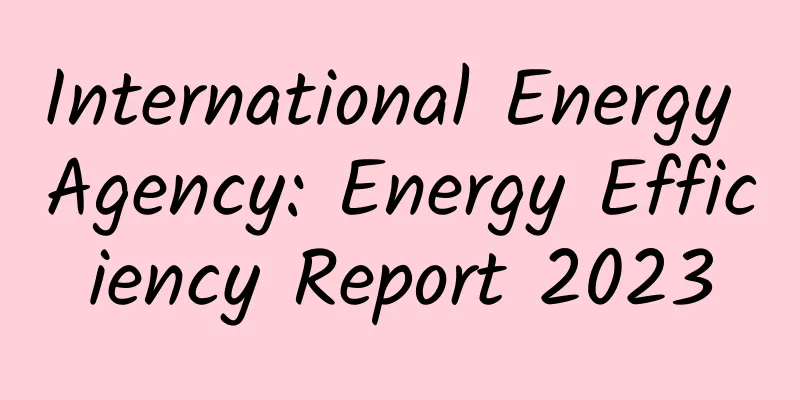International Energy Agency: Energy Efficiency Report 2023

|
The International Energy Agency has released its Energy Efficiency Report 2023. Efficiency policy momentum is increasing, but global energy intensity progress is slowing. The growth rate of global energy intensity (the main measure of energy efficiency in the global economy) is expected to fall back to 1.3% in 2023, below the longer-term trend. The lower rate of improvement in energy intensity largely reflects an increase in energy demand of 1.7% in 2023, compared with 1.3% in the same period last year. Policy actions are translating into investment and deployment Action has escalated significantly since the energy crisis began in early 2022, with countries accounting for 70% of global energy demand introducing or significantly strengthening efficiency policy packages. Annual energy efficiency investment has increased by 45% since 2020, with particularly strong growth in electric vehicles and heat pumps. The deployment of efficient technologies is curbing energy demand and heralds the imminent peak in fossil fuels In the first half of 2023, heat pump sales in Germany, the Netherlands and Sweden increased by 75% compared to the same period last year. Consumers now have better choices when renovating their homes or buying a new car. These choices open up opportunities for new levels of energy efficiency. The world is experiencing record high temperatures, which is increasing the need for cooling and reducing the need for heating. In 2023, the world experienced its hottest year on record, threatening to set off a vicious cycle of increased electricity use and higher carbon emissions. Heat waves can also exacerbate health disparities, reduce productivity, increase electricity costs, and disrupt basic services. Extreme heat puts pressure on power systems, requiring significant investments in grid infrastructure and generation, while also imposing high cooling costs on consumers, especially the most vulnerable. Doubling efficiency could cut energy bills by a third and reduce CO2 emissions by 50% by 2030 As the global target of doubling energy efficiency improvements by 2030, from 2% per year in 2022 to 4%, takes shape, international efforts, including at COP28, will play an important role in shaping future energy efficiency and demand paths. |
>>: Limited production capacity: Can Samsung not come up with a big move?
Recommend
Google testing Android/Chrome OS hybrid system 'Andromeda'
[[172434]] According to foreign media reports, Go...
How to clean your iPhone and AirPods? Apple's official tutorial is here
Cleaning digital products has always been a big p...
Wetland Guardian, explore the magnificent transformation of the White Bone Peak!
This warm scene is a mother white-bone croaker fe...
What is the difference between server hosting and virtual hosting?
The advantages of server hosting are that users h...
Smart eating in winter - cooking secrets to reduce salt without reducing flavor
The salt intake in the diet of Chinese residents ...
Alipay mini program operation strategy!
At the end of 2019, I switched from offline busin...
Apple releases iOS 15.5 official version: smoother, supports third-party payment for some apps
In the early morning of May 17th, Beijing time, A...
How much does it cost to develop the Baishan Hotel mini program? How much is the price for developing Baishan Hotel Mini Program?
WeChat Mini Program is an application that users ...
Don't argue about who is the leader between Geely and Great Wall. Everyone is buying Changan cars.
Recently, I have noticed that more and more cars ...
Android is in chaos, but Apple is king
Do you have the same or similar feelings: The And...
How serious is China’s potassium deficiency?
We often hear that China feeds 20% of the world&#...
[Smart Farmers] Extraordinary Decade | A report card on the modernization of agriculture and rural areas over the past decade
Editor's note: Since the 18th National Congre...
What does open source AI mean, and why is DeepSeek different?
DeepSeek has shaken up the AI industry, surpass...
UI interface drop-down menu complete design guide
Editor's note: This article is written by sen...
Sony PS VR experience: comfortable to wear, but the controller is terrible
Although this is not the first time we have seen ...









